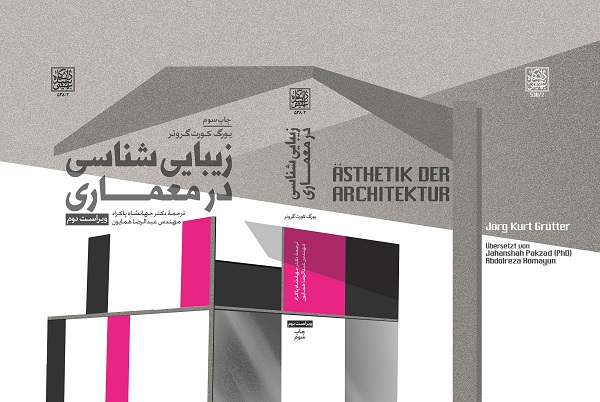
The Persian translation of the book Ästhetik der Architektur (second edition) by Dr. Jahanshah Pakzad, professor emeritus of the Faculty of Architecture and Urban Planning of Shahid Beheshti University (SBU) and Abdolreza Homayun has been published for the third time by SBU Press in 512 pages. The book was originally written by Jörg Kurt Grütter.
Today, architecture, in addition to being a discipline of exact sciences, is considered an art. The more or less rational aspects of architecture, such as economy, stability, and building physics can be precisely defined and quantified. Such problems can be solved with [mathematical] logic. The more or less irrational and emotional aspects of construction, which are more related to the field of aesthetics, are neither measurable nor precisely definable.
Certainly, this is one of the reasons for the uncertainty in the aesthetic aspects of construction. If people's opinion is asked about a particular building, the answers are often vague and subjective. When mentioning the reasons for the formation of their designs, architects often take refuge in the stronghold of professional terms, and most of them declare accidental causes as the origin of their work.
The experience of architecture and its perception is rarely quantifiable. Subjective factors are always beyond objective and measurable aspects. Architecture, as an object, can be measured, calculated and expressed with numbers and figures, but its audience, i.e. human being, cannot be assumed to be the same as the "bearer of subjectivity". Today, the process of perception can be explained to a great extent. Many physical, chemical and biological interactions can even be measured. Today, the side factors influencing perception such as physical condition, premonitions, experience, etc. are known, but these factors are so different from one person to another that it is practically impossible to generalize the process of perception in terms of connection with different states of perception.
Along with building as "objectivity" and human as "subjectivity", external conditions should be mentioned as the third factor; data that are dependent on neither the observer nor the purpose, but have an important effect on the perception process.
It is not possible to create a comprehensive theory about the aesthetics of architecture for the aforementioned reasons. It is not even possible to predict how to design and build in order to deliver a good architecture.
In the introduction of the book, an attempt has been made to briefly present that part of the general principles of perception, which is useful in explaining the aesthetic characteristics of architecture. The introduction of these topics is a major part of the book. Of course, certain processes are sometimes simplified to a certain extent to make their important issues more prominent. Therefore, this book does not claim to be complete. The examples presented in this book have been selected from different periods and cultures to emphasize certain principles of architecture, which can be generalized regardless of time, climate, culture and ideology. Quotations also aim at directly presenting the most important features of any way of thinking.
The present book is not going to write a prescription. In this book, an attempt has been made to clarify the apparent complexity of the process of architectural perception in order to facilitate case decisions. Therefore, the audience of the book are not only specialists, but all those interested in the effect of the environment and the design of the surrounding space.

